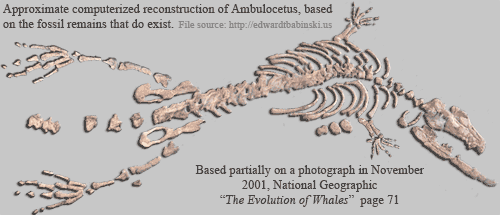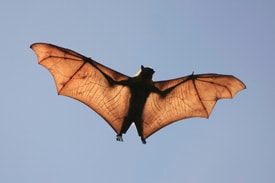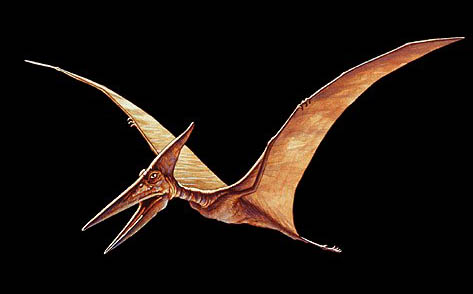There were two pictures of what at first appeared to be the same species of dandelion and portraits of two biologists. By looking very closely at the dandelion pictures, I was able to see some minor differences. The text explained that one of the biologists (unfortunately I've forgotten both names) said that the two types of dandelion were different enough to be regarded as separate species, while the other believed they were similar enough that they should not only not be considered different species, but not even subspecies. The latter biologist said that the differences were just variability within a single species.
If scientists can't even agree on living specimens, how can we trust them with extinct species?
This is actually a good thing to ask. It's based on the misconception that new species are somehow poofed into existence suddenly. That hardly ever happens, because most speciations are gradual. Two separated populations of the same species increasingly diverge and become less and less reproductively compatible. So we should, if Darwin was correct, have quarter-species, and half-species, and so on, and at some point, it's a judgement call as to whether or not they've diverged sufficiently to call them a new species.
It get more complicated than that. We have clines and ring species, where any two adjacent populations can interbreed, but those populations at the extremes of the range, are completely reproductively infertile with each other. So long as the intermediate populations are alive, it's still one species. But if one or more of the intermediate populations dies out, then there are two species.
Here we have two living varieties (or species, depending on your point of view) of dandelion. We can do all manner of experiments on them - we can cross breed them, we can examine their DNA and do whatever else we can think of to determine their relationship - and scientists still can't agree whether they are one species or two.
Which, if you think about it, would have to be, if Darwin was right.
If they can't agree when they have living specimens to experiment on, how can we trust their judgment when they don't even have bones, but just rocks that look like bones (aka fossils) that they can't do any biological experiments on, but must judge subjectively.
Good point. In all likelihood, many fossil organisms, which we classify as one species, probably represent several. Only when there is sufficient anatomical change to confirm that speciation has occurred, can we say that speciation has happened. And even then, there might be two morphs of the same species. This is another reason why transitionals are not common for species, but are abundant at higher taxa.
For example, was Neanderthal man a different species from us, a subspecies or simply an extinct race?
It's a close call. We do have the Neandertal genome sequenced sufficiently to show that they are far from the normal human genome. They are, however, much closer to us than chimpanzees, which are pretty close, in the high 90percent similar, depending on the particular measure you use.
It is now clear that our ancestors could interbreed with them, even if that didn't happen very often. My guess is that they were only partially reproductively compatible, and so there weren't offspring most of the time.
So, it might be like polar bears and grizzly bears, who diverged maybe 10,000 years ago, and can still interbreed, even if they are quite different in many ways.
There was a third species, the Denisovans, for whom we have DNA, and that might help illuminate the issue a bit.
It seems that there's not agreement there either. But it doesn't stop there. I once knew a Neanderthal. That's right - a living, breathing Neanderthal. I lived in an apartment building, and a guy in one of the other apartments looked just like the pictures you see in scientific articles of Neanderthals. If you were to find his skull fossilized, you would think it was of a Neanderthal.
Unlikely. I, for example, am descended from Northern Europeans, have red hair, freckled arms even as an old man. I have a large head, prominent nose,
a robust skeleton, and until the last decade, was a good deal stronger than most people. All of these suggest Neandertal genes.
But I would be well outside the range of a Neandertal in both anatomy and genetics. I just happen to be a lot more robust than most modern humans.
Could it be that they weren't even a subspecies, but a(mostly) extinct race?
Keep in mind, there are no biological human races today. There is more variation within any "race" you might define, than there is between them. It's probably like bears or those dandelions. Something not fully evolved as a different species. I think they were for a couple of reasons. For one, even though they lived in the same area as anatomically modern humans for many thousands of years, there really wasn't much gene flow our way. This is really unlike humans, who enthusiastically share genes. The second thing is that very early Neandertals looked more like us than more recent ones. So they were clearly going off on their own, much earlier than previously thought.
While your definition of the word "evolution" is technically correct, when you put the words "the theory of" in front of it, it changes the meaning considerably. It's not only about change, but about the origin and development of species. For the theory to work, one species has to be able to change so much over time, that it is considered a different species.
And from time time, we're paying attention when that happens. Would you like to know about some of them?
It seems to me that, to determine the validity of this theory, we need a definition of the word "species".
For eukaryotes, "a population organisms that are interfertile in the wild", the biological species concept, is the most useful one.
But how can we ever determine the theory's validity, or even have a rational discussion about it, if categorization into species is a matter of opinion?
As you see, it's only a matter of opinion where the divergence has been relatively recent. The longer the divergence goes, the easier it is to determine speciation. You should know that most creationist organizations freely admit the fact of speciation. The Institute for Creation Research, for example, says that all the present species of animals evolved by hyperevolution over few thousand years, from a few "kinds" on the Ark.









